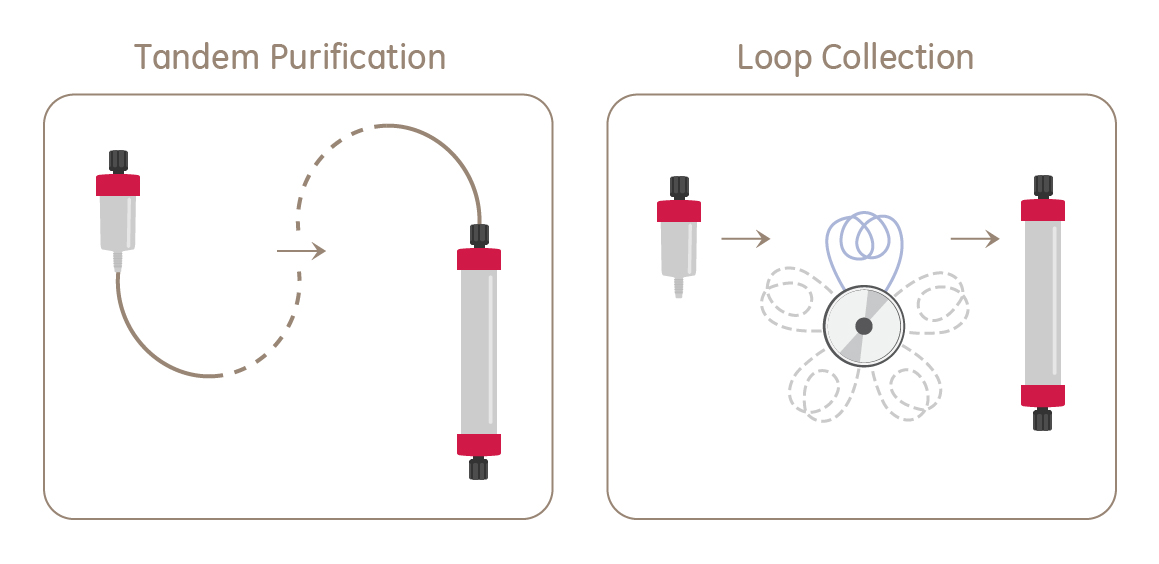You may have heard about straight-through processing (STP) or unattended, multistep purification. It sounds good, but what is in it for me? And, can I use the system I already have in my lab?
Straight-through processing
Process intensification refers to ways to increase your productivity, while reducing costs and efforts. STP is an example of process intensification. Another example is continuous chromatography.
In STP, your target protein is purified in a first chromatography step, re-injected onto the next column for further purification in a second step, and finally collected, all in one automation method without the need for manual interactions between steps. GE Healthcare has numerous laboratory-scale STP solutions using our ÄKTA systems. With ÄKTAprime plus, you can automate two purification steps by using a 2D kit. ÄKTAxpress allows you to automate up to four steps for as many as four samples. With ÄKTA pure and ÄKTA avant, you can use hardware modules to build your own methods for automated multistep purifications.
There are two different basic STP concepts: tandem purification and loop collection.
When using tandem purification, the eluted protein peak from the first column is identified using a watch command (e.g., UV greater than 20 mAU). A fulfilled watch activates a flow path change so that the peak is directed straight to the second column. The benefit with this setup is that you get a quick transfer of your sample to the second column. Rapid transfer can, for example, be useful when purifying an antibody that is unstable in the low pH used for elution from a first protein A affinity column, and quick pH neutralization is required to maintain antibody stability. By using tandem purification, purified antibody from the first column is rapidly transferred to a second column, which in this example is a size exclusion chromatography column for buffer exchange to a neutral pH.
Loop collection, on the other hand, is beneficial when, for example, you are using a gradient to elute your protein from the first column. Here, watch commands can be used to collect different peaks in different sample loops attached to a loop valve. For our ÄKTA systems, the loop valve can hold up to five sample loops of preferred size. Once the collection is complete, content of the selected loop is re-injected onto the second column. In ÄKTAxpress, the peak with either the largest area under the curve or greatest height is selected by default for transfer to the second chromatography step.
So, let your ÄKTA system do unattended, multistep protein purifications for you, while you attend to other tasks in the lab.
Learn more from the following cue cards:
